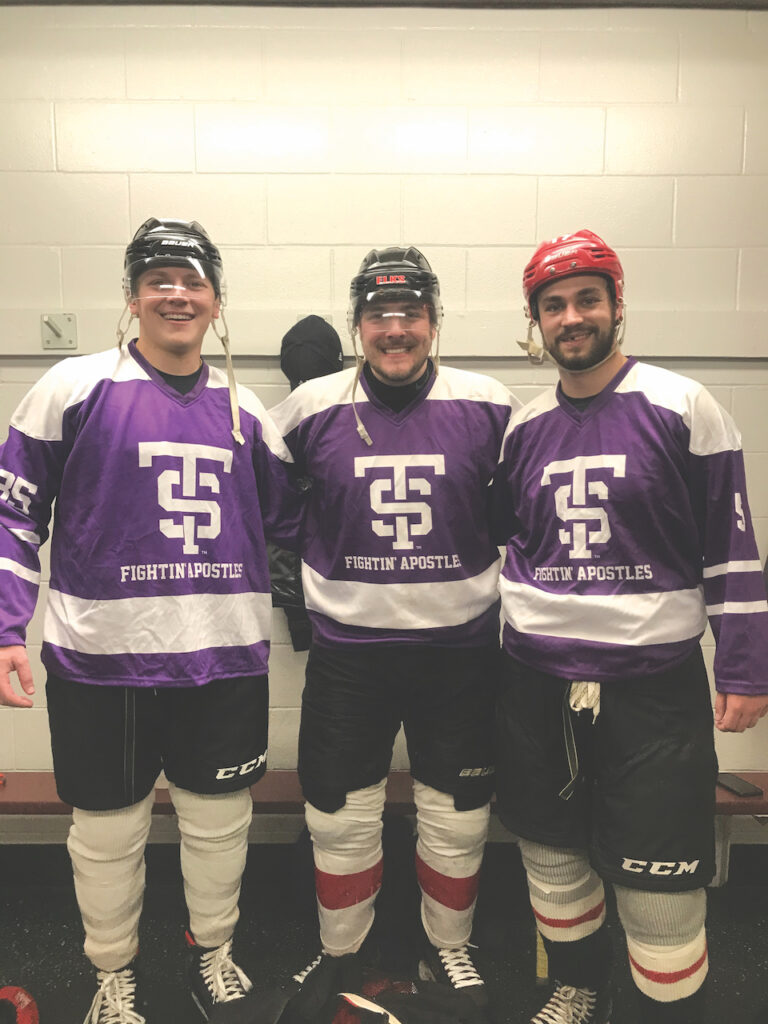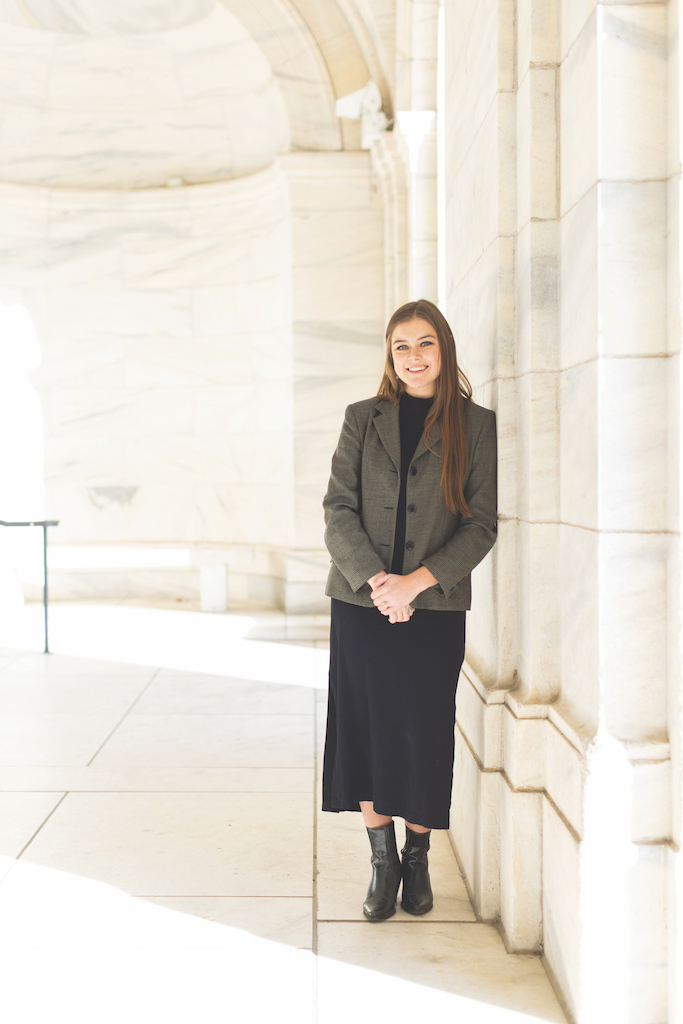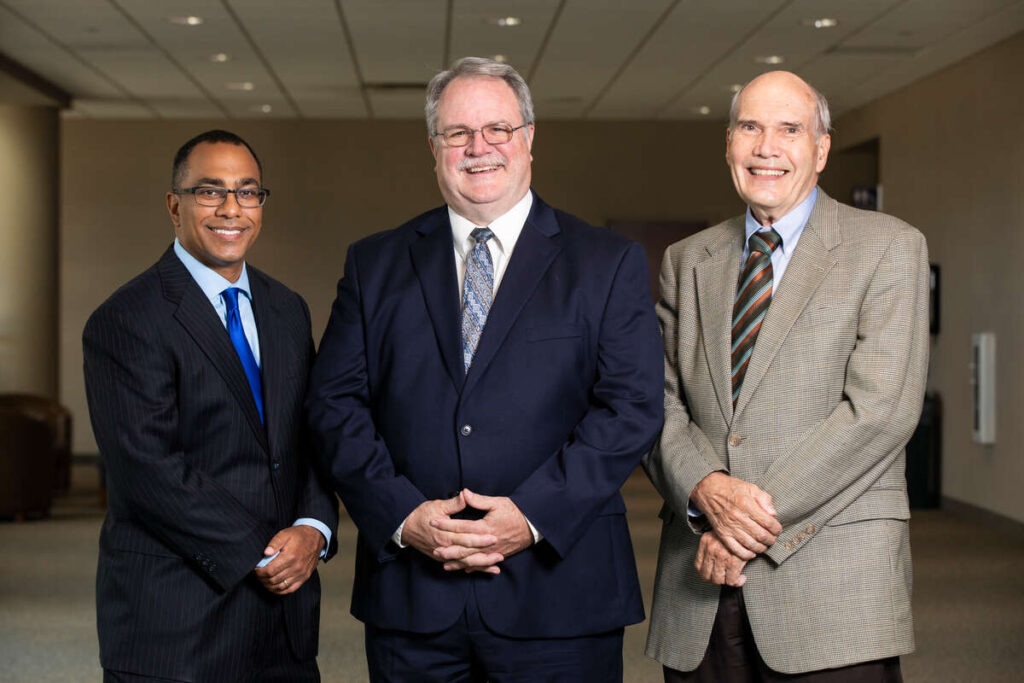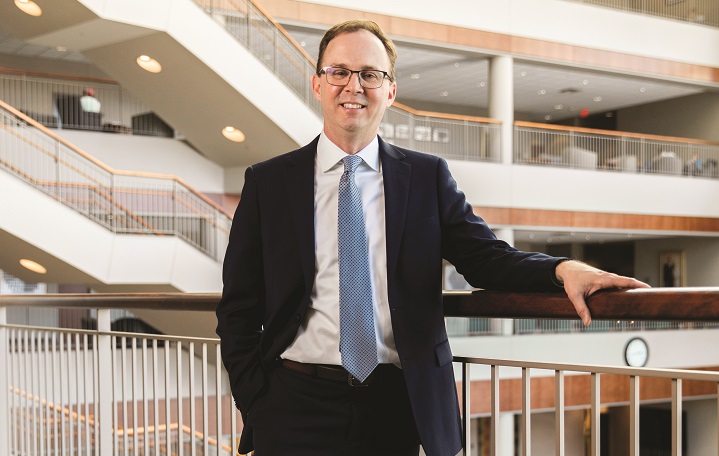Eighteen-to-one.
This is the new federal crack-cocaine versus powder-cocaine sentencing ratioenacted last July when President Obama signed The Fair Sentencing Act of 2010 – a change that Professor Mark Osler has worked toward for almost a decade.
Previously, the ratio had been 100-to-1: Individuals with 100 grams of powder cocaine received the same mandatory sentence as someone with 1 gram of crack cocaine.1 This disparity originated in the late 1980s in response to a belief that crack cocaine was much more addictive and linked to higher violent crime rates than powdercocaine.2 Instead of addressing these concerns, however, the enormous sentencing difference resulted in disparities between racial groups. People of color using cocaine would commonly use crack, the cheaper option. Although these users were also frequently lowlevel offenders, they received lengthy prison sentences, while their Caucasian counterparts, who generally used the more expensive powder cocaine, received much lower sentences.
Osler, who joined the University of St. Thomas School of Law faculty last fall, saw that disparity first-hand as a federal prosecutor in Detroit. He said he loved his work at the U.S. Attorney’s Office for the Eastern District of Michigan because he was serving entirecommunities in addressing their vulnerabilities. He did this in both obvious and subtle ways as he prosecuted cases ranging from a Chinese immigration smuggling case in which the victims were prostituted in New York, to working on one of the first terrorism cases involving the Hezbollah.
It was also through prosecuting drug cases in this position that Osler saw the sentencing disparity in the crack versus powder cases and gained a deeper understanding of its counterproductivity. While the legislative intent was to punish those who were mostculpable, in particular the street dealers, in practice, the majority of the crack cases were brought against addicted users.
One case in particular still stands out to Osler. Anthony Shepherd, an 18-year-old African-American, was discovered in an abandoned building with a gun and crack cocaine; he faced a fiveyear mandatory minimum for each. Shepherd’s defense attorney, Andrew Densemo, argued at sentencing against the crack-cocaine disparity despite the judge’s clear indication that the law was straightforward and argument waspointless. Nevertheless, Densemo spoke for 20 minutes about how the federal guideline was counterproductive and did not impact crack on the streets. Densemo repeatedly had given the same speech, but this time Osler began to reflect more about the effect of the law. Osler wins Spears vs. United States Beyond thinking about the disparity and its impacts, Osler became an expert in the issue. In 2000, he became a professor at Baylor Law School in Waco, Texas. There he dove into the issue, researching and writing law review articles about the history of the sentencing guidelines and advocating a complete reform simplifying the “amoral strictness” of the guidelines.3
U.S. Supreme Court Justice John Paul Stevens even quoted Osler’s position on the sentencing disparity when writing a dissenting opinion in United States v. Booker, 125 S.Ct. 738, 785, fn15 (2005). Stevens argued that although the majority stated that judicial discretion is sufficient to address the racial disparity created by the sentencingguidelines, the characteristics judges can consider are tightly bound by “the limits of the mandatory system,” as Osler had written.4
“While the thick-as-your-wrist Guideline Manual specifically directs sentencing judges to make thousands of determinations of discrete points, not once does it expressly direct that a specific decision leading to the applicable guideline range on the 256-box gridshould or must turn on an individualized consideration of the traditional goals of sentencing.”5
In addition to writing numerous articles challenging the sentencing disparity, Osler became directly involved in pursuing change through legal processes and cases. In 2004, he testified before the U.S. Sentencing Commission. While discussing the need to balance the right to a jury trial, judicial efficiency, uniformity and respect for judicial discretion, he poignantly drew attention to the reality that each of these are impacted by the decades-long tug of war between the legislative and executive branches.6 “To ignore that context is to invite a continuation of the worst aspects of those battles,which include lurching changes in federal sentencing, alienation of those most involved in the system (including district court judges) and constant distraction from what should be our central focus: The maintenance of a sentencing system that is both fair and workable.”7
Osler further briefed and argued cases in federal appellate courts, eventually winning Spears v. United States, 129 S.Ct. 840 (2009), in the U.S. Supreme Court as lead counsel. Spears was a major landmark, because the Supreme Court clarified that federal district courts have the ability to depart from the crack-cocaine guidelinesbased upon a policy disagreement with the disparity it creates. This was followed by another victory, when President Obama signed the 2010 legislation officially reducing the cocaine sentencing disparity.
Inspiring His Students
Osler combines his expertise in sentencing-guideline issues and his passion to inspire students in his role as professor. Developing a lifelong relationship with and having an impact on students is why he became a professor. He saw in his own professors the freedom to create change through ideas and the capacity to inspire others. Two professors in particular had a lasting influence on both Osler’s career and his life.
First was Ronald Rapoport, his undergraduate government professor, who had a passion for government policy and helped Osler develop a deep understanding of how policy issues could have an important impact on people’s lives.
Second was Daniel Freed, one of Osler’s law professors who passionately engaged students in his work, which also focused largely on sentencing issues. Like Rapoport, Freed demonstrated how the law is a precious means to positively impact people’slives. In fact, Osler noted that almost all of Freed’s law students carry on a legacy from Freed as lawyers who strive to touch people’s lives through their work.
“Professor Freed was the warm, kind, brilliant, engaged teacher who probably never realized the profound effect he had on his students,” Osler said about his mentor. “He engaged us on many levels – challenging our beliefs and ideas at the same time thathe challenged us personally and supported us in our endeavors. He is the reason, the primary reason, that I am a law teacher (I wanted to be like him), that I am passionate about sentencing (he was right to care so much), and that I try to be fully human with my students (he was that, as well).”
Being like Freed is a goal that Osler appears to have achieved, although he likely does not fully realize it given that his students consistently describe him as humble. Just as Freed approached teaching as working together toward a goal, Osler continually involves students in his endeavors. In fact, one of the cases in which he worked with aformer student became the basis for a 2009 drama, “American Violet.” The American Civil Liberties Union (ACLU) contacted Osler about Regina Kelly v. John Paschall, filed in the U.S. District Court for the Western District of Texas. The case accused Paschall, theRobertson County District Attorney, and the South Central Texas Narcotics Task Force of more than 15 years of racial discrimination. The ACLU filed the case on behalf of 15 individuals who were indicted following a 2000 public-housing project narcotics raid in small town Hearne, Texas, where 28 individuals, all but one of which were African-American, were arrested based on a single informant’s uncorroborated tip.
The informant’s information was ultimately unreliable. Within a week of the first trial, all of the charges that had not been resolved by the defendants pleading guilty were dropped. In response to the ACLU’s request, Osler contacted former student David Moore to work on the project. Moore said, “I am deeply indebted to Professor Oslerfor having the gall to suggest to the experienced and capable ACLU lawyers and attorneys at Wilmer, Cutler, Pickering, Hale, and Dorr [now Wilmer Hale] that a former cop and small town lawyer, who had only been practicing solo for less than a year,might be able to help with the case.”8 As a result of Osler and Moore’s work, the case ultimately settled, and Texas Mark Osler won Spears v. United States in 2009, in which the Supreme Court clarified that federal district courts have the ability to depart from the crack-cocaine guidelines based upon a policy disagreement with the disparity it creates on a single informant.
Osler’s Three Pieces of Advice to Students
Beyond students extolling Osler as being inclusive in projects, they also appreciate that he is an approachable professor who both genuinely cares for each student and teaches lasting lessons of thoughtful lawyering. Osler encourages current and former students tofind the right path in using the legal profession to touch people’s lives. This generally includes three pieces of advice.
First, truly serving others will probably require some self-sacrifice. He warns students that this frequentlyinvolves a financial sacrifice by taking positions with lower salaries.
Second, some of the most important decisions people make are ones that other people will not like. Others will not see law professionals as heroes when they point out things that are not working, and they will not want to listen when law professionals suggest what they could do better.
Third, and probably most important, is the need for humility. “You are never going to be the most important person in the room,” he said. “You are not the one who has been victimized. You are not the one who is going to prison. As an attorney, you can never make a decision based on ego; you cannot carry forward bitterness from moments when your pride was hurt, or you could easily cause an injustice to the opposing side.”
Within Osler’s own career and life, he seems to have written a narrative that balances experience, expertise and embracing the profoundness of the professor-student relationship. One former Baylor law student, Peter Pope, said of Osler, “It’s as though he holds his gift lightly, as though it’s on loan and he must be responsible with it.”
The University of St. Thomas School of Law was thrilled to have Osler join its faculty last fall. Osler recognizes the match between his goals and St. Thomas’ mission. St. Thomas was appealing to Osler because he sees the cocaine disparity as a social justice issue. It is also an issue directly tied to his faith, and he feels compelled to take action when something is wrong. Osler finds immense encouragement in working with other St. Thomas staff and faculty who feel the same compulsion to dedicate themselves to social justice issues.
Taking on President Obama
Osler’s work is still not over, however. His next projects focus on continuing to speak out against juvenile life-without-parole sentences, as he did before Congress last year, and on pardons and commutation of sentences, including those in which individuals were over-sentenced in crack cases. Osler specifically is focusing on President Obama’s record of granting no commutations or pardons as of November 2010, nearly two years into his term – “a sorry record that distinguishes him from almost all of his predecessors,” Osler said.9 He will be asking Obama to recognize the power he holds to continue to right the wrong that resulted from the overly harsh sentencing in crack-cocaine offenses. Osler will work to pressure the White House both formally and informally, including working on petitions and through other academic forums.
Inside and outside the classroom, Osler has worked to positively influence people’s lives. In the years to come, he will no doubt continue to be recognized for living out the St. Thomas mission and inspiring his students to create positive change.
NOTES
1 Although Minnesota once shared in a sentencing disparity between crack cocaine and powder cocaine, it was a pioneer in sentencing fairness. In 1990, then Hennepin County Judge Pamela Alexander ruled that the law authorizing the disparity was unconstitutional, a decision that the Minnesota Supreme Court upheld. The Minnesota legislature eventually statutorily abolished any sentencing differences between crack and powder cocaine in 1992.
2 2002 Commission Report at 9-10.
3 Policy, Uniformity, Discretion, and Congress’s Sentencing Acid Trip, Mark Osler, 2008, at 46.
4 Id.
5 Id. (citing Uniformity and Traditional Sentencing Goals in the Age of Feeny, Mark Osler, 16 Fed. Sentencing Rptr. 253, 253- 254 (2004)). Most sentencing guideline systems in America use a two-dimensional “grid” that compares the offense severity with the offender’s prior criminal history to determine what sentence to deliver in a particular case.
6 Written Testimony of Mark Osler Before The U.S. Sentencing Commission, November 17, 2004.
7 Id.
8 Megan Willome, “Mark Osler: 2009 Wacoan of the Year,” https://wacosphere.com/2009/12/mark-osler-2009-wacoan-of-theyear/.
9 “Mark Osler: Obama’s Mercy Dearth,” TheDallas Morning News, Nov. 5, 2010,https://www.dallasnews.com/sharedcontent/dws/dn/opinion/points/stories/DN-osler_07edi.State.Edition1.207df40.html/
Author: Christina Davenport ’09, is an assistant Winona County attorney, Minnesota, specializing in drug prosecutions and coordinating the Rural Crime Unit.
Read more from St. Thomas Lawyer




